[Global Research Trends] 3. Top 10 Fields & Papers on Brain and Cognitive Sciences (2000-2024) with a Summarized Study
![[Global Research Trends] 3. Top 10 Fields & Papers on Brain and Cognitive Sciences (2000-2024) with a Summarized Study](/content/images/size/w1200/2024/08/Scinapse-Trend_3-1.png)
/ Scinapse Trends Series #3
‘Scinapse Trends’ will be updated bi-weekly on Fridays with research trends to make the researcher's journey easier.
In this Scinapse Trends edition, we will explore the field of brain and cognitive science (BCS). BCS focuses on the human brain and cognitive functions, integrating various disciplines such as neuroscience, psychology, and artificial intelligence to study human mental and behavioral processes. Recently, BCS has seen significant growth, with its importance highlighted in medical advancements for treating and preventing brain and mental diseases, technical innovations like artificial intelligence and brain-computer interfaces, and its application in psychological and social science research on human behavior, thought, emotions, and motivation. Additionally, the relevance of these elements to the essence of humanity makes BCS significant from philosophical and ethical perspective, making the examination of its research trends meaningful.
Top 10 Fields & Papers on Brain and Cognitive Sciences (2000-2024)
- Top 10 Fields on Brain and Cognitive Sciences

Note : The data of 2024 could be partially reflected.
Based on the number of publications, Neuroscience ranks the first with 41,076 publications. Along with Neuroscience, Psychology, Cognition, and Cognitive Psychology, which are traditional disciplines of cognitive science, ranked 2nd, 3rd, and 4th with 38,397, 26,835, and 23,188, respectively, following Biology as 14,169 publications.
Note : Scinapse does not provide the total publication number for each field directly.
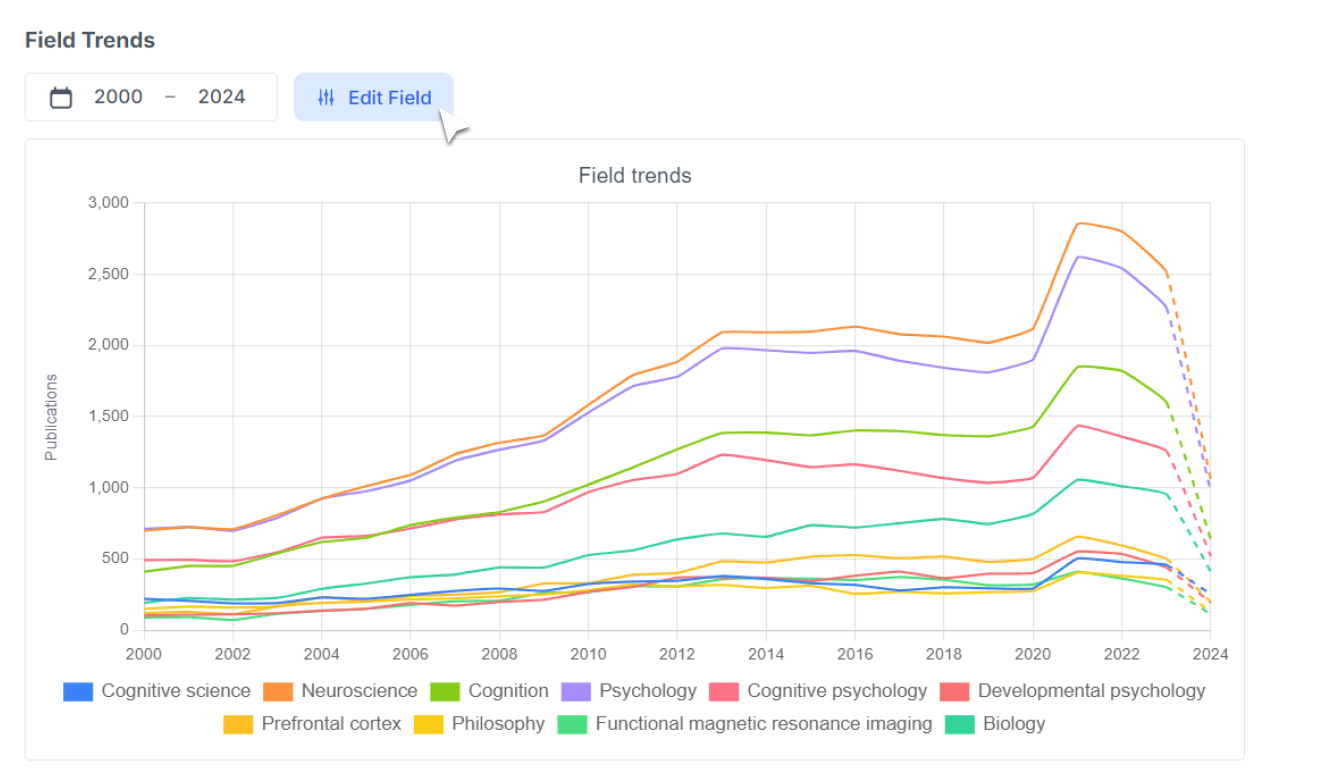
This graph, which can be viewed directly on Scinapse Research Intelligence, shows that not only the top fields (especially Neuroscience and Psychology) but also relatively subfields such as Prefrontal Cortex, Cognitive Science, Developmental Psychology, Philosophy, and Functional Magnetic Resonance Imaging have experienced rapid growth during the 2020-2021 period. This indicates that while the BCS field has steadily grown over 24 years, it saw particularly rapid growth during the COVID-19 pandemic.
(This ranks are for the period 2000 - 2024)
Top 10 Papers on Brain and Cognitive Science (2000-2024) selected by Citations
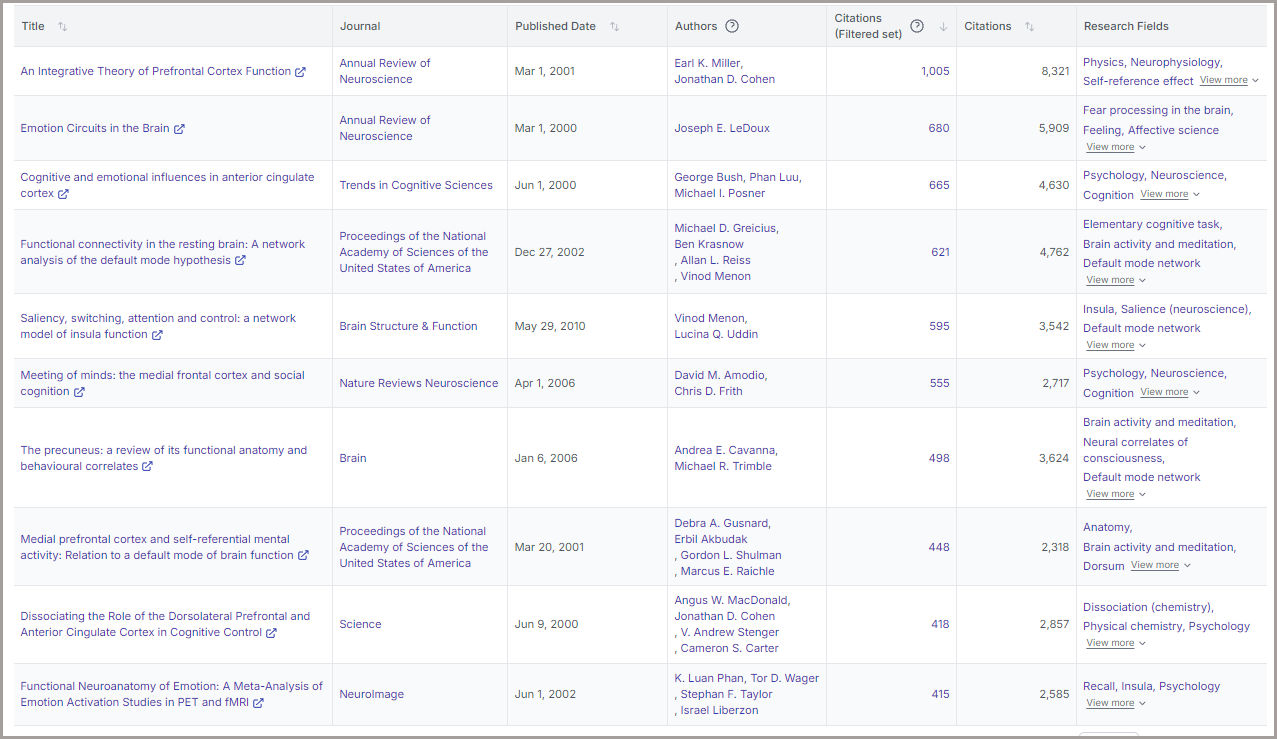
On the other hand, the Top Papers tab allows you to explore more refined results based on custom search filters and criteria that you set. While traditional other paper search engines typically provide lists based only on total citations and h-index number, Scinapse offers rankings within the specific framework you configure, such as by year, keywords, and fields, making it useful and time-saving.
In this filter, the Annual Review of Neuroscience is noted as the most cited journal. Considering the published date, among the top papers, the 2010 publication Saliency, Switching, Attention and Control: A Network Model of Insula Function stands out as a very influential and powerful paper.
How Can I Extract Research Insights From Scinapse?
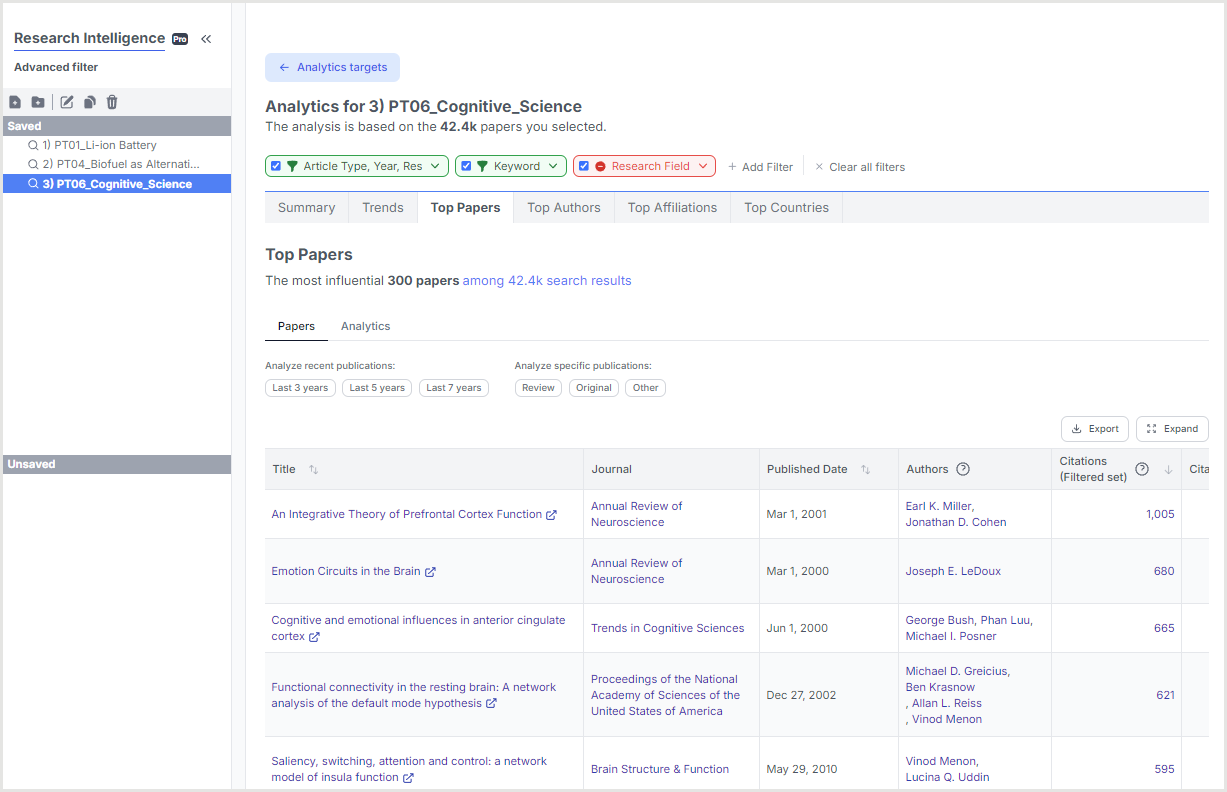
Scinapse's Research Intelligence Advanced Filter allows users to add and edit various filters according to their research objectives. This enables not only searching for the right paper but also gaining insights into advanced research trends.

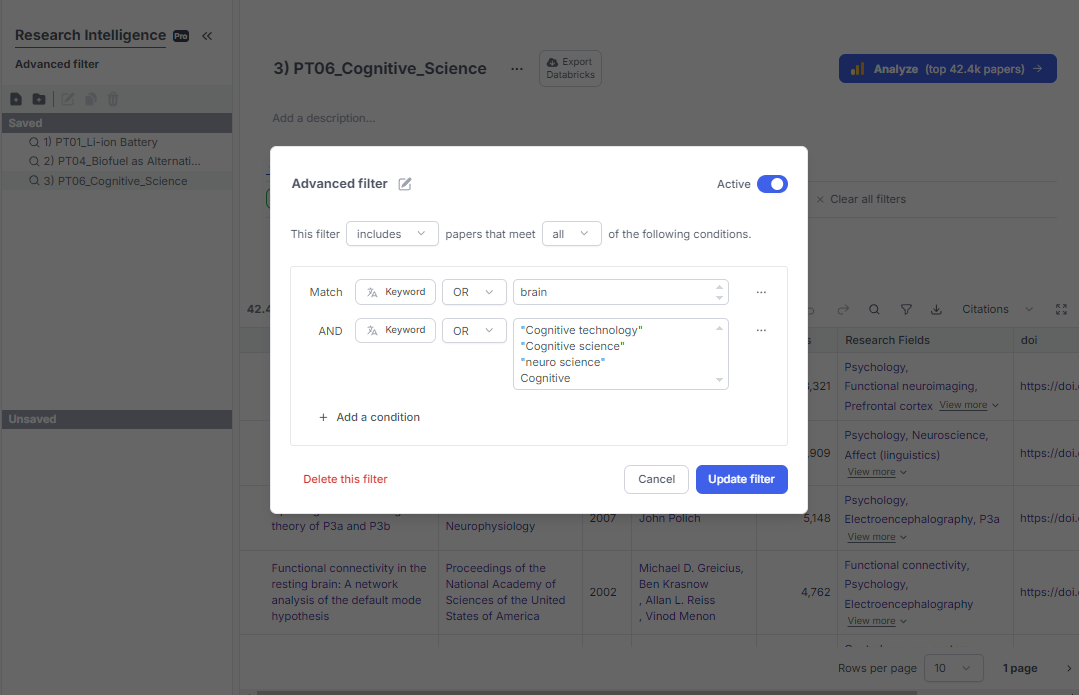
You can set the condition or combinations as above up to your research objective in detail, and
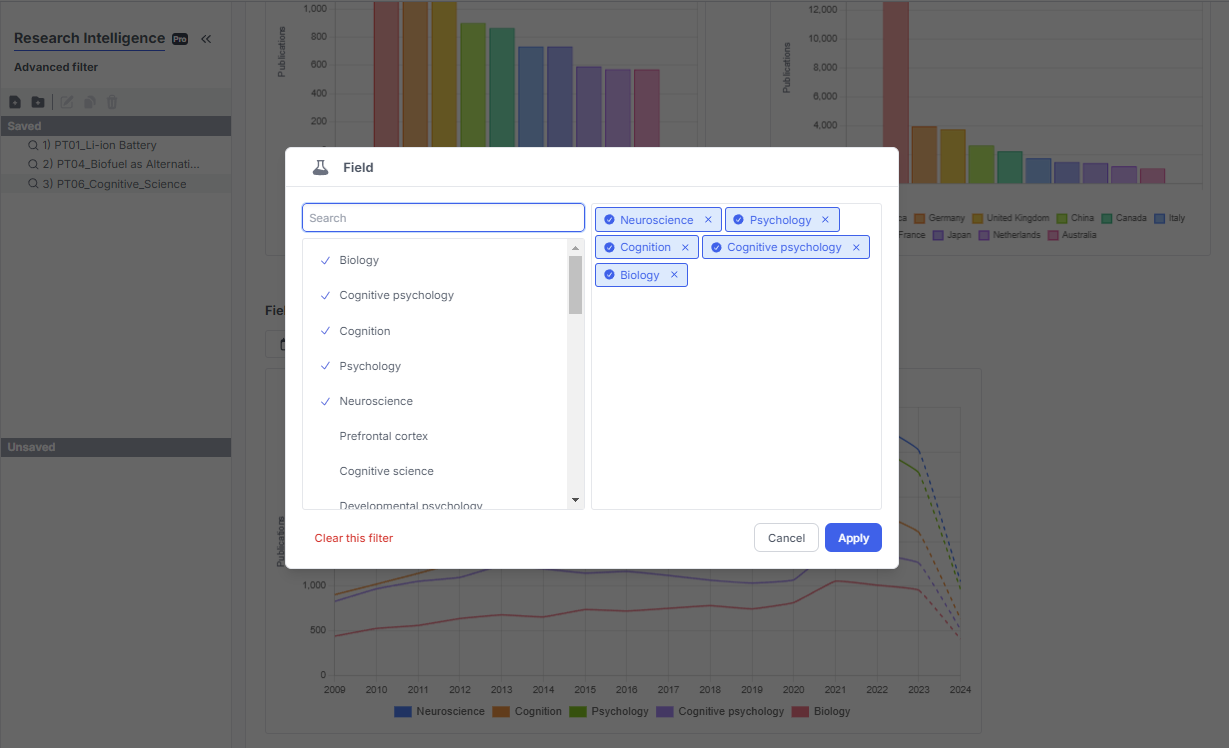
also can add or remove the field you want to see or delete by clicking [Edit Field] from Field Graph to see and track the research trends of the field.
How Has BCS Evolved Over the Past Years?
So what kind of actual research content has changed and developed over the last 3, 5, and 7 years? Over the past few years, brain and cognitive sciences have focused on the understanding of the biological mechanisms and neural timescales of mental disorders through large-scale studies and advanced neuroimaging techniques.
In the last 7 years, brain and cognitive science research has focused on brain structure and function, functional network stability, cortical organization, cell type differences, sex-specific depression signatures, social interaction networks, emotion regulation, image processing for brain studies, and neurocognitive dysfunction in psychiatric disorders.
Over the last 5 years, the research has concentrated on brain imaging and connectivity, network dysfunction in psychiatric disorders, brain structure-function relationships, aging, network synchronization, genetic influences, and lateralization patterns in the human brain.
In the past 3 years, research has focused on the biological mechanisms of mental disorders, brain network specializations, and how neural timescales influence cognitive processes through large-scale studies and advanced neuroimaging techniques, especially in mental disorders. It also captured in neural timescales, and advanced neuroimaging, with a focus on genetic studies, social exclusion, memory distribution, and synaptic pathology in autism.
The “AI Research Insights✨” shows how research has been conducted and progressed within your search criteria over the last 3, 5, or 7 years. It’s been recently released!
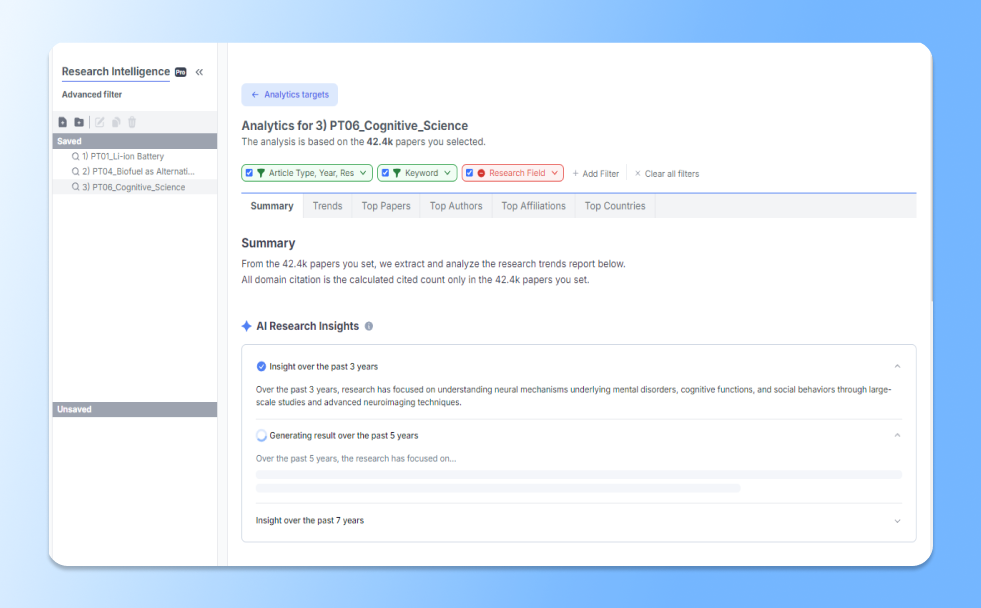
👇🏻If you need a product tour, try it from here.
Data source - Scinapse / Topic advised by RI Team
Written by Geehee Nahm
For Previous Scinapse Trends 🔽
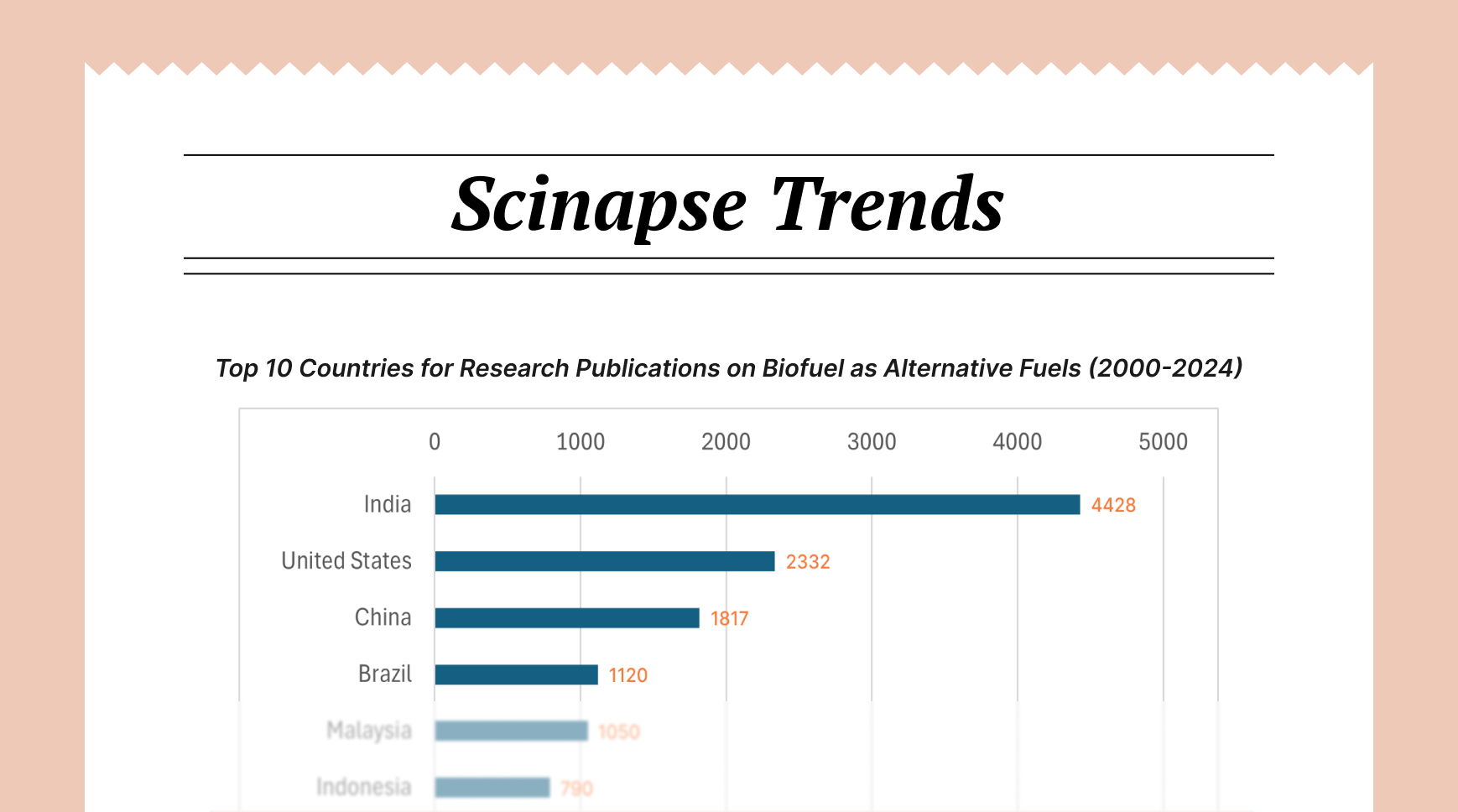
Never re-search again.
Scinapse is made by researchers for researchers.
Join the next generation of research at ⏯️ https://scinapse.io/
Pluto Labs
Pluto Labs helps researchers focus on their research by improving several inefficiencies in the academic research process. We offer data-driven insights from academic papers, allowing users to easily obtain review-level results for their desired range of papers.
https://pluto.im/

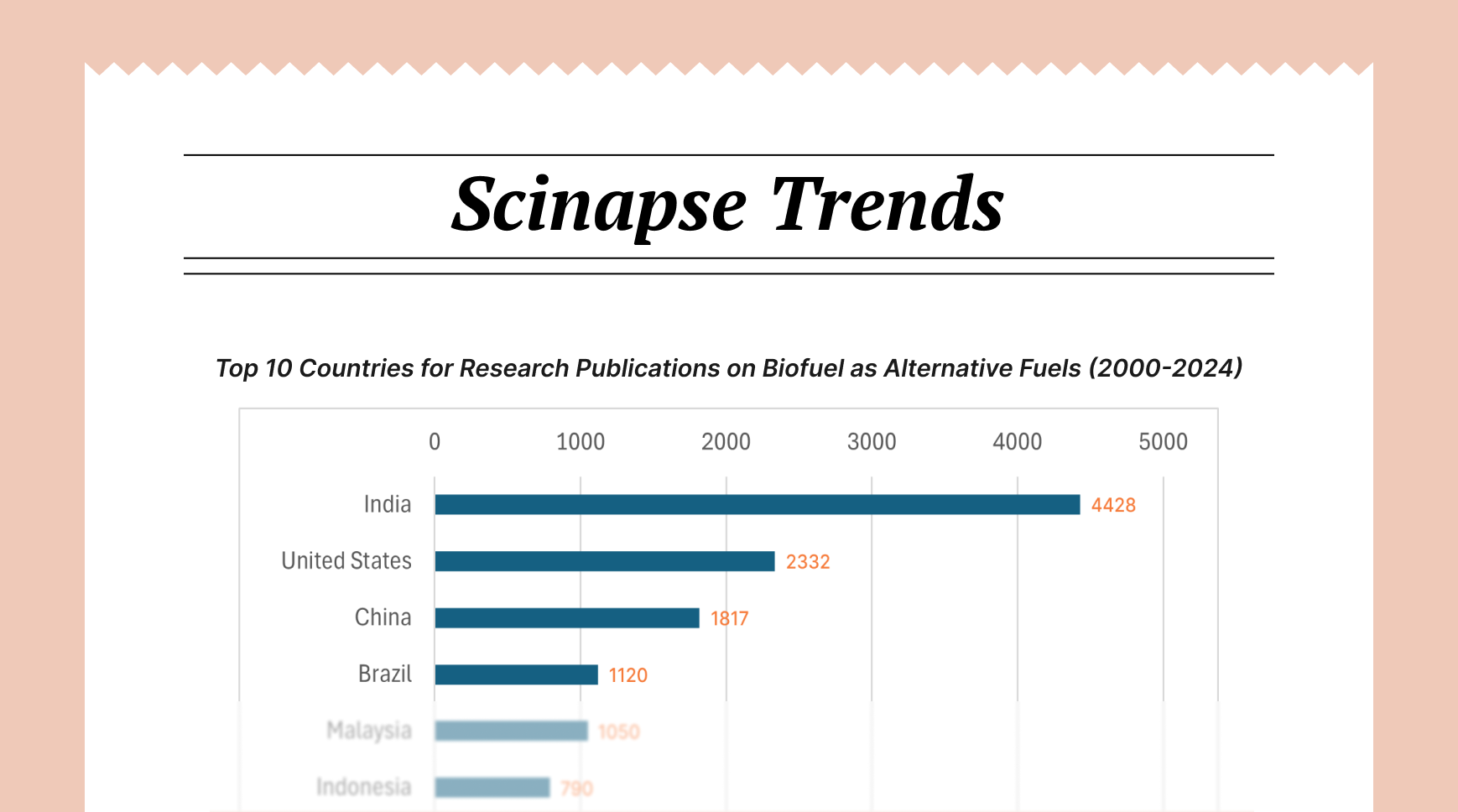

![[Global Research Trends] 10. Top 10 Countries on Microneedle Research Publications (2014-2024)](/content/images/size/w720/2024/11/Scinapse-Trends_10.png)
![[Global Research Trends] 9. Top 10 Countries on FOWT Research Publications and Authors' Normalized h-Index (2014-2024)](/content/images/size/w720/2024/11/Scinapse-Trends_9--1-.png)
Comments ()